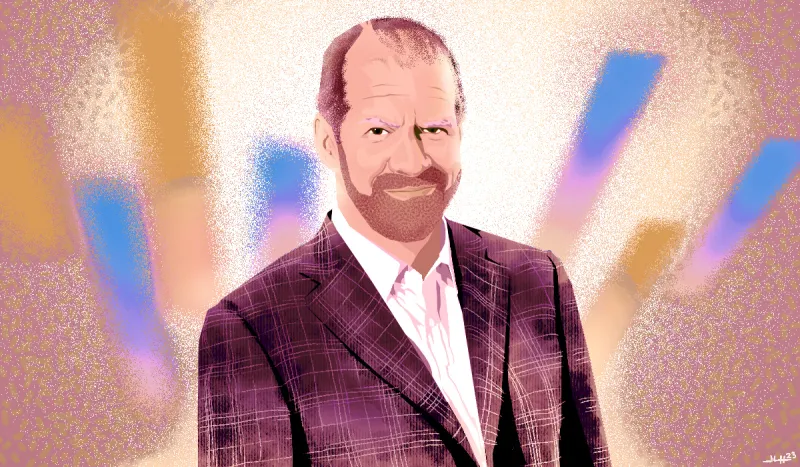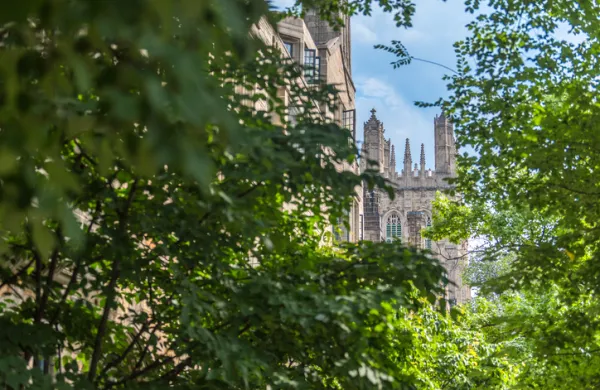
Illustration by II
Years before he became Princeton University Investment Co.’s long-tenured president, Andy Golden was a professional photographer, who focused on the horizon when positioning his subject in snapshots.
Golden is an amateur photographer now, but his focus on the horizon — in this case, the investment horizon — has remained. It's this focus, along with a commitment to investment partnerships, thinking independently, and mentoring others in the industry, that set him up for a long and successful career.
Golden will retire next year. Under his leadership, PRINCO has generated billions for the university. His team has seeded successful venture capital managers, and his mentorship has helped former team members go on to become chief investment officers in their own right. And he has had fun while doing it. Golden is Institutional Investor's Lifetime Achievement Award winner and will be honored at the sixth annual Allocators' Choice Awards on September 12.
“There's something refreshing about engaging with somebody who is incredibly smart and successful, but who never takes himself too seriously,” says Peter Ammon, CIO at the University of Pennsylvania and a former PRINCO employee. “It's a great reminder to enjoy what we’re doing and to always try to see the humor in things.”
Golden focuses on the longest possible time frame for PRINCO’s investments. “People say, ‘What's that?’” he says. “And I say, ‘Forever.’”
That’s rare.
Golden, as many sources confirmed, really believes that PRINCO is investing in perpetuity. PRINCO typically partners with managers early in their lifecycle and sticks with them through market ups and downs.
“The really incredible thing about endowments is that they have this ability to have a long-term perspective,” says Letitia Johnson, CIO at Amherst College. “But in order to take advantage of that as an investment team and process, you need to have someone who thinks long term. Andy has that in spades.”
Although PRINCO uses outside firms to invest the endowment’s money, Golden chafes at the phrase “manager selection.” He says it implies that the managers do most of the decision-making. Instead, he sees his work as partnering with managers.
PRINCO is frequently the first investor in a new fund. Some managers said the endowment will commit capital even earlier than that, coming in before the next official fundraise. Members of PRINCO’s investment team join the fund’s limited partner advisory committee and actively participate alongside other institutions.
The $35 billion endowment also prefers working with a small roster of managers, which means making large allocations to funds. Golden adds that his team members have to make sure they’re comfortable with a certain level of concentration in the portfolio.
“When someone then trusts you and takes a bet on you, you in return really trust him,” says Laurel Bowden, founder of venture firm 83North, which spun out of Greylock. PRINCO was one of 83North’s first investors and has since become the firm’s largest investor, with a seat on its advisory board.
“Andy is a guy who focuses much more on long-term relationships, mentorship, and interpersonal skills than what will be your return over the next one to two years,” says David Fialkow, co-founder of venture firm General Catalyst.
Fialkow recalls that at a General Catalyst retreat for CEOs of its portfolio companies, Golden told the head of Datalogix, which had generated huge returns, what that meant for an endowment. “‘It’s dozens of fully funded scholarships. There's a likely chance that one of the people whose scholarships you just funded may be the person who cures cancer,’” Fialkow remembers Golden saying.
“The favorite will be, if you will, cheap,” Golden says. “Quality will be on sale. I didn't realize at the time that I would someday use that as a principle as an investor.”
After graduating, Golden worked as a bartender and photographer. “Being an artist is almost like being an athlete in that you do have to have talent, but you also have to work really hard, and you need to get in condition,” he says. “So, if I try and make a picture now, it ends up looking like a picture that someone else has already made because I just haven't put in the reps to really develop or rekindle a distinctive vision.”
Golden says both art and investing require a distinctive vision.
“Photographers can often see things from different perspectives,” Ammon says. “Maybe it’s too literal, but there's something in that idea that relates to Andy’s success as an investor. He not only develops his own unique points of view, but he retains the ability to see things from the perspectives of other people.”
Golden got his start at the Yale Investments Office under the legendary David Swensen. Golden had set up an informational interview with Dean Takahashi, Swensen’s longtime right-hand man, about socially responsible investing. But he left mulling over what Takahashi had said: If he really wanted to make a difference, he’d consider an internship at YIO.
“Dean convinced me pretty quickly that certainly having a career in socially responsible investing was likely to be frustrating to me,” Golden recalls. “He used what I now describe as a toaster-oven argument: Toaster ovens don't toast as well as toasters and they don't bake as well as ovens.” If Golden wanted to pursue investment excellence — and make a difference via growing an endowment’s pool of capital — he’d join the investment office, Takahashi said.
This era was “ground zero for the David Swensen revolution,” as Golden puts it. He learned about long-term investing and all the ways an endowment could diversify its portfolio, including into venture capital.
After spending one year at Duke’s endowment, Golden became Princeton’s investment chief in 1995. A group of volunteer trustees had been running investments, hiring outside managers to do the job. The model worked well over the years, according to Golden, but Princeton eventually became too large to be overseen by a volunteer committee alone.
PRINCO’s board decided to delegate authority to Golden and his growing team. Then they could make some contrarian calls.
During the technology bubble in the late 1990s, PRINCO eschewed tech and growth stocks in favor of small-cap equities, value stocks, and emerging markets. “That was particularly bold given a couple of crises in the late ‘90s,” Golden says. “That helped create a virtuous cycle of confidence, both internal and external.”
Since Golden joined in 1995, the endowment has posted an annualized return of 12.6 percent. The endowment has grown tenfold and has contributed almost $20 billion to Princeton.
“Seen through my eyes, he’s a classic value manager,” says Jeremy Grantham, co-founder of GMO. “He believes that cheaper items perform better in the long run .... The odd thing is for a value manager, he’s done much better than I would have thought was possible. He's been able to sidestep some of the pain better than the rest of us and has performed very well even in the era where value has done particularly badly.”
The process and constant conversation between him and his team members keeps them engaged, he says. He believes this flow of information can improve investment outcomes and attract and retain talent. And those things are necessities for his leadership method.
“Andy is a big believer in the ‘one team, one dream’ mentality,” says David Lee, CIO at the Chan Zuckerberg Initiative. Lee worked under Golden before becoming a CIO. “He was always very deliberate about structuring the workflow and team meetings to be able to give people broad exposure.”
These days, Golden and his team have been spending a lot of time improving the diversity of the managers in their portfolio. In the early 2000s, managers in the endowment’s portfolio were quite homogenous, says John Rogers, former PRINCO board member and founder of Ariel Investments. For years, Golden collected diversity metrics and talked with managers about the importance of improving the diversity of their teams.
The team, which wanted to avoid too much manager turnover, was convinced it would take a long time to improve diversity.
About five years ago, Golden and his team realized they needed to change their approach. Rather than engaging only current managers, they could add firms that were already diverse. “We, like a lot of the allocator world, relied on the reference and intelligence network of the people we've already worked closely with to check out new talent,” Golden says. “But if that network is reasonably homogenous, then you can see that you're never going to break free.”
The approach is working. Over the past five years, 70 percent of the managers PRINCO has added have had diverse ownership of 50 percent. Currently, diverse-owned firms oversee 27 percent of Princeton’s assets that are managed by U.S.-based managers.
Golden, who is retiring from PRINCO in June, is still figuring out what comes next. He’s focused on using the time he has left as CIO to position PRINCO for its next chapter.
He’s left his mark on Princeton and the industry. Managers and allocators count Golden as one of their mentors. “There are a number of people you can find in the investment world that all call Andy and think of him as an advisor to them,” says David Sze, managing partner at Greylock Partners.
Golden has also shown allocators a path forward — one that allows them to express their human side.
“He’s shown us all what a good investment program looks like, but his impact goes beyond PRINCO,” Amherst CIO Johnson says. “It's on an individual level, but it’s also generally setting the tone in our industry, which is this amazing combination of being Type A investment people who want to generate great returns but who also can have fun and enjoy the role."






